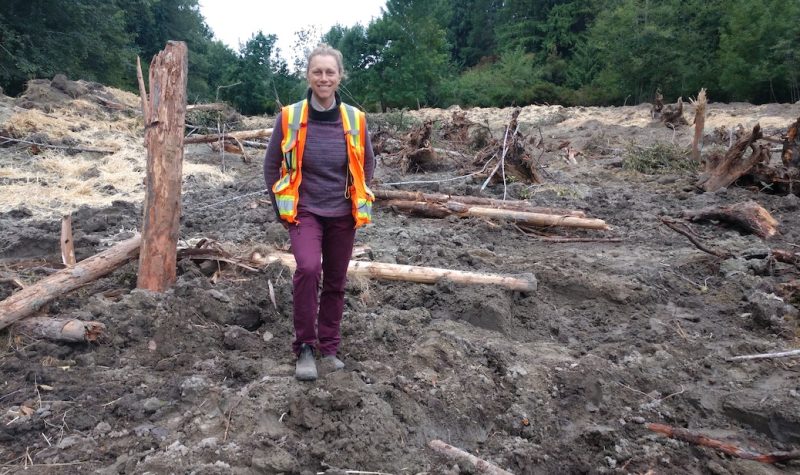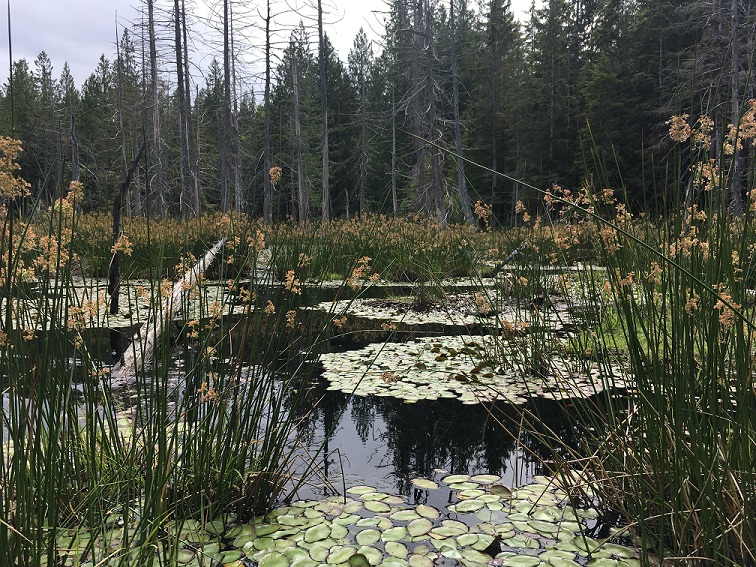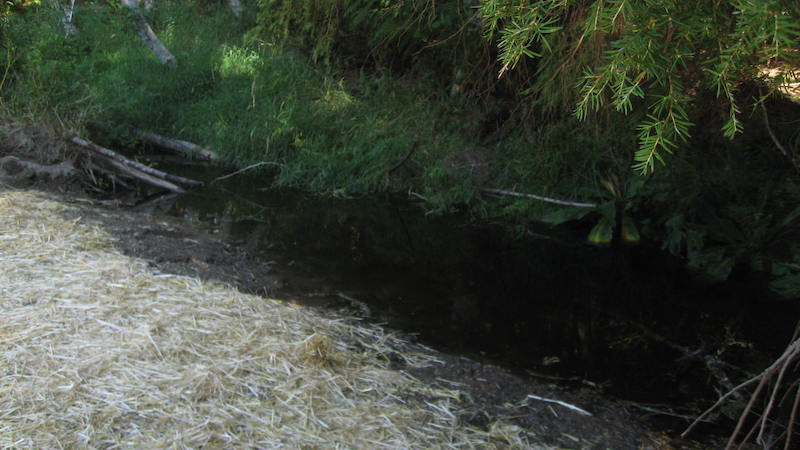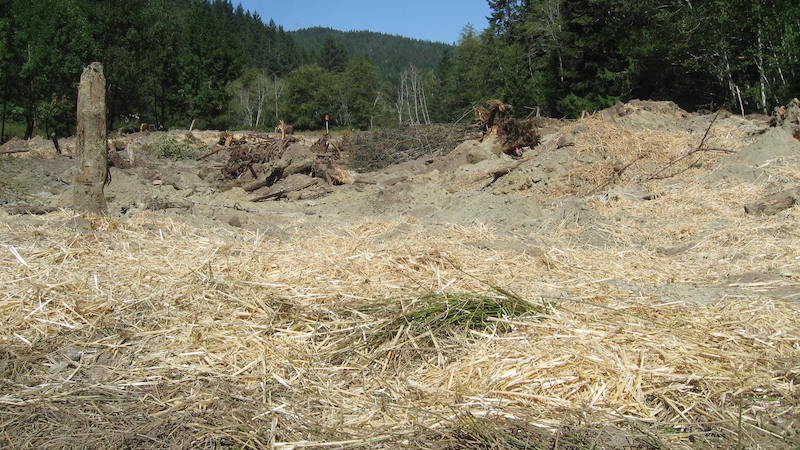The construction phase of the Dillon Creek wetlands restoration project, in what is now known as Linnaea Farm, ended on Aug. 20.
“It looks like someone put a stick of dynamite right in the middle of the field and blew it up, I admit that, but it is actually a very well thought out design and we used a lot of different techniques in the construction of the wetlands," Project Manager Miranda Cross said.
It has been about three years since the Friends of Cortes Island (FOCI) and Linnaea Farm Society (Linnaea) embarked upon this venture to mitigate the damages from late 19th and early 20th century human farming techniques.
Wetlands are a natural filter. They capture, and store the sediments and nutrients (human and animal) that ditched streams would otherwise deposit into lakes.
Dillon Creek has been ditched. It has been moved and channelized to create fields and drain the natural wetlands of the valley for farming. Ongoing erosion in Dillon Creek continues to contribute sediments and nutrients into Gunflint and Hague Lakes. Restoring wetlands will function to mitigate nutrient and sediment transport which contribute to algal blooms in the lakes.
The problem is not unique to Dillon Creek. There are gardens, livestock, and roads with ditches all around the shores of lakes.
“This is an issue that is happening at almost every single inlet to the lakes,” said Cross. “So, it is an ongoing project and there are plenty of opportunities around the lake where we can try to create wetlands that will capture and store sediment and nutrients that are flowing into the lake.
Linnaea Farm was the logical place to begin. Prior to being preempted by Mike Manson in 1887, the fields, some of which are now being converted back to wetlands, are believed to have been a series of cedar swamps and beaver ponds. The land has gone through several owners and name changes since then, but Linnaea Farm is both an educational centre and the largest farm on Cortes Island. The current stewards’ dedication to environmental stewardship and willingness to collaborate made them the ideal partners for FOCI.
Cross explained how water from Dillon creek will enter the wetlands.
The inlet to the wetlands is 30 centimetres above Dillon Creek’s low water mark and six metres wide.
“When we get an intense storm or a rain event, the elevation of the creek rises and will flow partially into the wetlands,” said Cross.
The wetlands needed to be restored to a state similar to what existed prior to the farm. The soil needed to be decompacted and full of the pits, high spots and low spots that exist in nature, which provide variable microtopogrpahy which supports a diversity of plants and animals. Frogs love loose soil, because they burrow into the mud to escape predators.
“If you go into the forest or into a swamp or a beaver pond, there is a lot of wood around. The wood has numerous functions; primarily we use it for habitat“ explained Cross. “Frogs and fish will hide under it. Turtles and waterfowl will come and loaf on logs for rest and hunting. Other birds will come and perch; dragonflies will come.”
She has seen the wildlife arrive within a week on other projects.
Cross says that in this time of the climate crisis, wetlands is of vital importance for the ecosystems services they provide such as; creating natural fire breaks; sequestering carbon; cleaning and storing water; providing critical habitat for wetland dependant species and species at risk; moderating climate extremes such as summer heat waves and droughts and intense erosional winter precipitation events.
The Dillon Creek Wetland Restoration project is a first step. If you would like to support ongoing wetland restoration work around the lakes, you can donate via cheque, payable to Friends of Cortes Island Society, memo "Wetland Restoration" at this address: Friends of Cortes Island Society, Box 278, Mansons Landing, BC, V0P 1K0, Canada. Or donate to FOCI online.





